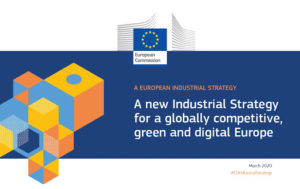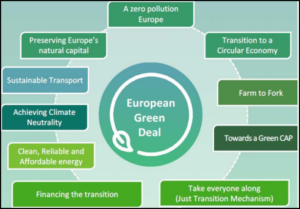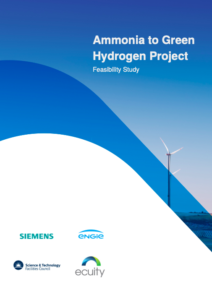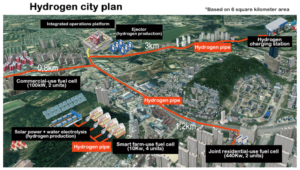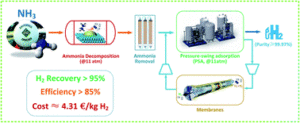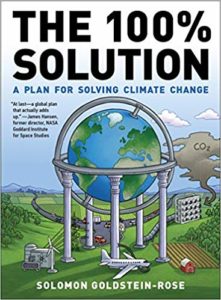The European Commission has added two building blocks to its burgeoning structure of economic and environmental policy initiatives. In separate communications on July 8, the EC announced An EU Strategy for Energy System Integration and A Hydrogen Strategy for a Climate-Neutral Europe. Together the two strategies present a practical pathway toward a sustainable energy economy.
Energy Carrier
Europe! (continued)
Last week Ammonia Energy published “Europe!”, an article describing the European Commission’s Green Deal and the related appearance of national hydrogen strategies from several European countries. This week we have an article that describes another consequential European initiative that, while related to the Green Deal, is running on a distinct track: the Clean Hydrogen Alliance. Along the way a clear call to action has been sounded for the ammonia energy community.
Europe!
Earlier this month Germany announced the adoption of a National Hydrogen Strategy. This is the latest piece to fall into place for the European Union’s broad strategy to become a zone of comprehensive sustainability. The German plan comes a few beats after the European Commission's unveiling of its Green Deal framework, but Germany is positioning itself as the organizational hub for the Green Deal's hydrogen energy elements.
Engie, Siemens, Ecuity, and STFC publish Feasibility of Ammonia-to-Hydrogen
The UK’s Department for Business, Energy and Industrial Strategy (BEIS) recently published the feasibility study for its Ammonia to Green Hydrogen Project. This studies the techno-economic feasibility of importing green ammonia in order to supply large volumes of high-purity low-carbon hydrogen in the UK. The project has been designed and delivered by a heavyweight consortium of ENGIE, Siemens, Ecuity Consulting, and the UK’s STFC. The feasibility study, which is publicly available, represents the conclusion of Phase One of this project. Phase Two is demonstration: “to raise the TRL of a lithium imide based ammonia cracker from 4 to 6/7,” meaning that the technology is ready for deployment.
Hydrogen in Australia: investments and jobs
There is so much hydrogen news coming out of Australia that it is hard to keep up. At the state level, Tasmania has released its draft plan to increase renewables to 200% of its electricity use by 2040. This marks a serious start to establishing a renewable energy export economy, and includes funding and policy support to ramp up green hydrogen and ammonia production and begin exports by 2027. At the federal level, ARENA announced that its AU$ 70 million funding round for large-scale, “shovel-ready,” renewable hydrogen projects received applications representing over $3 billion of commercial investments. Australia’s renewable hydrogen industry has appetite and momentum, “and we’re seeing a lot of projects ready to be built.” As if to prove the point, two developers in two weeks have each announced hydrogen projects that could produce a million tons per year of ammonia. These are at opposite ends of the low-carbon spectrum: Leigh Creek Energy's in-situ gasification (ISG) coal-to-ammonia plant; and Austom Hydrogen's 3.6 GW green hydrogen export project.
South Korea Launches Hydrogen Cities Initiative
In October 2019 South Korea’s Ministry of Land, Infrastructure, Transport, and Tourism announced a “hydrogen-powered cities” initiative that the World Economic Forum characterized as a bid to “win the race to create the first hydrogen-powered society.”
Hydrogen Filling Stations: techno-economic analysis of on-site ammonia reforming and H2 purification
This month, a team of researchers from Fuzhou University in Fujian, China, published a new paper in the journal Sustainable Energy & Fuels that provides a “Techno-economic analysis and comprehensive optimization of an on-site hydrogen refuelling station system using ammonia.” The study concludes that “the H2 production cost of the NH3-fed on-site hydrogen refuelling station was at least 15% lower than other carbon-free routes (such as electrolysis, solar thermolysis, photo-electrolysis, etc.), and comparable to that of a methane steam reforming system with carbon capture and storage.”
A 100% Solution to Climate Change: Why is Ammonia Necessary?
It’s easy for people working on a particular technology or product to get overly focused on its wonderful promise. Sometimes we forget to consider whether or how our favorite idea fits into the larger issue. Of course, nearly everyone reading this piece in Ammonia Energy will be heartily into the idea of green ammonia as an energy carrier in a zero-emissions world. But let’s keep things in context – is green ammonia one good idea, one possibility, or is it an absolute requirement of a full solution to climate change? I looked at this question, not only for ammonia but for every category of technology, in the research and analysis project that became The 100% Solution, a recently-published book. It lays out five “pillars” that constitute the physical minimum steps needed to solve climate change.
South Australia Planning Hydrogen Export Strategy
The state of South Australia earlier this month issued a tender for professional services under the title “Hydrogen Export Study, Modelling Tool and Prospectus.” The tender is a further step in the state’s campaign to become a major exporter of renewable energy in the form of green and/or blue hydrogen. The results of the study are expected to “inform key considerations such as locations for hydrogen production and export, volume of supply potential, the interdependencies of hydrogen supply chain infrastructure, and the landed cost of clean hydrogen exported from South Australia.”


